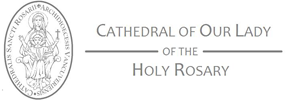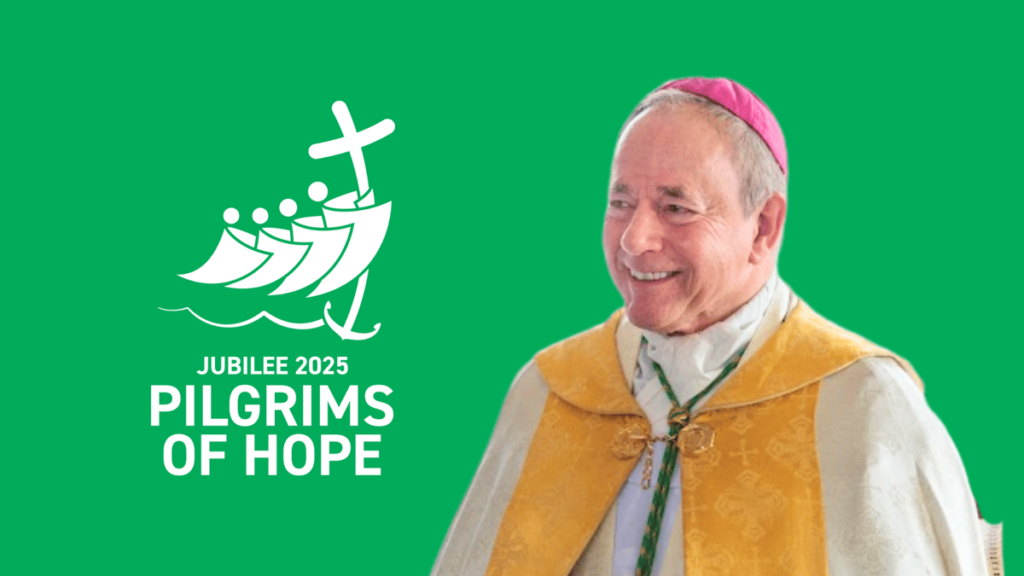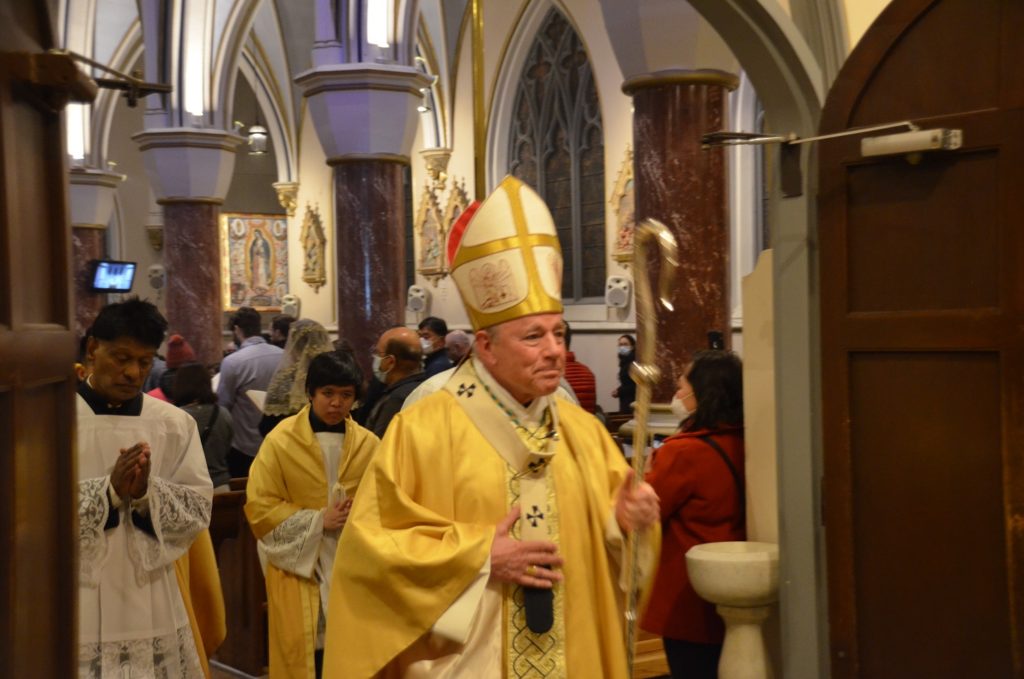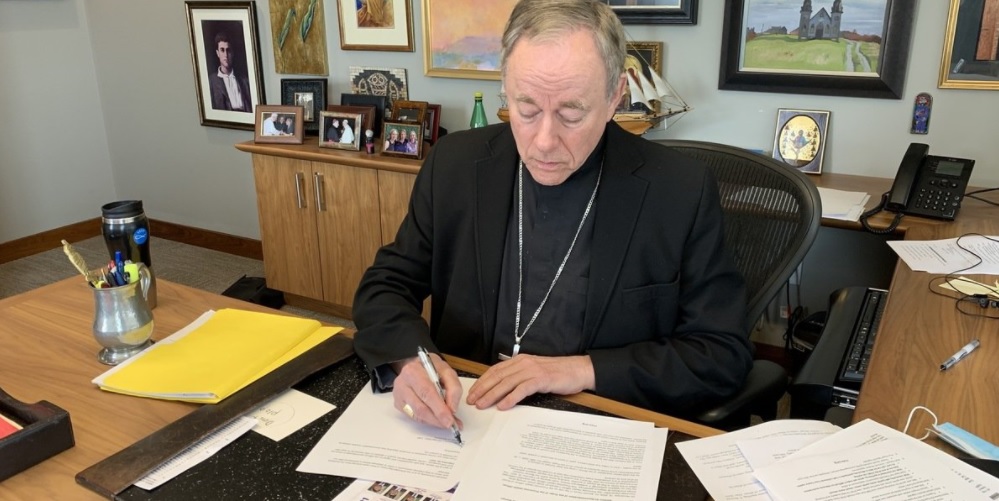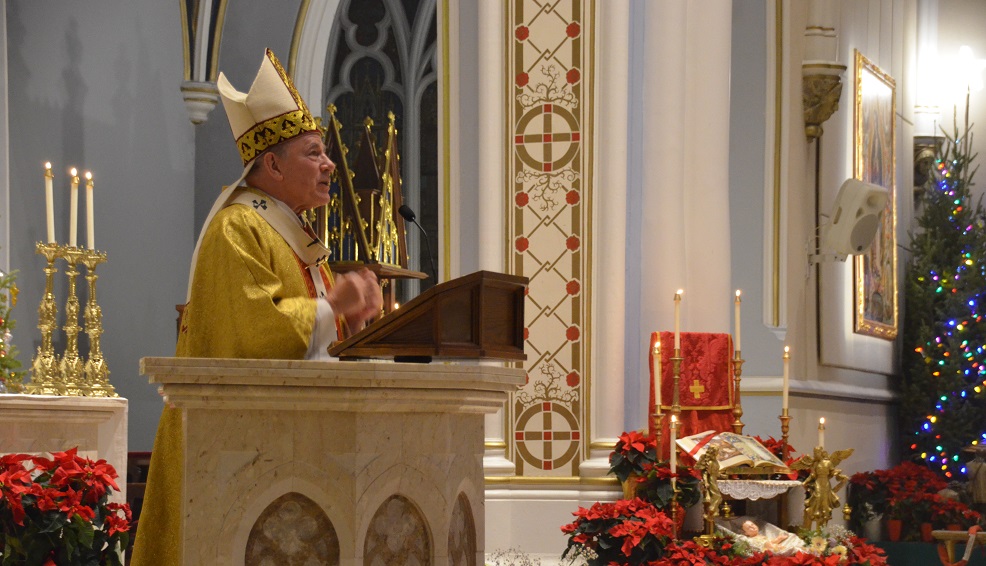Dear Brothers and Sisters in Christ,
The Jubilee Year of Hope is a profoundly significant and grace-filled year for our Archdiocese. It offers us unique opportunities to deepen our relationship with God and one another. Pope Francis encourages us to be “pilgrims of hope” on our journey to the Father’s House (cf. John 14:2). In this Pastoral Letter, I wish to share with you the blessings of this Jubilee Year and inspire you to strengthen your hope in Christ.
What Is a Jubilee Year?
The word “jubilee” comes from the Hebrew word “yobel,” meaning a goat’s horn, the instrument used to announce a year of rest and restoration for the people of Israel: “You shall treat this fiftieth year as sacred” (Leviticus 25:10). During jubilee years, slaves were freed, debts were forgiven, and the land was not sown or harvested. These years highlighted God’s mercy and care for his people. Today, in a different context, these acts of justice can be carried out through charitable works affirming every individual’s dignity and rights.
At the outset of his public ministry, Jesus alluded to this ancient tradition. He proclaimed that a “year of the Lord’s favour” (Lk 4:19) was about to begin. Signs of a jubilee became evident in his caring for the poor, curing the sick, freeing the oppressed, and offering forgiveness to sinners.
The Church began celebrating jubilee years in 1300 when Pope Boniface VIII proclaimed the first holy year. As this new century dawned, he wanted to foster people’s holiness and make God’s infinite mercy readily available. To do so, Boniface opened the Church’s treasury of grace to grant indulgences. This inaugural jubilee was an enormous success; millions of pilgrims flocked to Rome to gain the jubilee indulgence.
By 1350, following the biblical custom, jubilee years were held every fifty years. As time passed, the interval between holy years was shortened to every 25 years, allowing people of every generation to experience this outpouring of grace.
Extraordinary jubilees can be declared outside the 25-year cycle to mark special needs or occasions in the Church’s life, such as the Holy Year of Mercy in 2016. Our Jubilee of 2025 is a preparation for the extraordinary jubilee in 2033, which will celebrate the 2000th anniversary of Jesus’ Passion, Death and Resurrection.
“Hope Does Not Disappoint”
Every holy year focuses on a theme. This year’s is “Pilgrims of hope.” Pope Francis highlights the text where Saint Paul affirms that “hope does not disappoint, because God’s love has been poured into our hearts by the Holy Spirit that has been given to us” (Romans 5:5).
The Holy Father chose this theme because of the tragedy caused by the coronavirus pandemic that generated so much disorientation and fear. Moreover, the Jubilee is being celebrated “at a difficult moment in the history of humanity, with the world still wounded by wars and violence, by the shedding of so much innocent blood.” Peace, justice and brotherhood appear to be impossible dreams. So many people are discouraged and look to the future with pessimism. Without hope, the world is gripped by disillusionment and despair.
This pervasive “hope deficit” also affects members of the Church. The revelations of clerical sexual abuse and the Church’s participation in the negative generational impact of the federal residential school system have led to anger and discouragement. Hope is also put to the test when the Church appears as tired and sapped of enthusiasm. Christians, too, need a rekindling of hope.
Young people feel particularly disenfranchised. Their inability to secure meaningful employment, the high cost of buying a home, and the difficulties of raising a family lead many to lose hope in themselves, society and religion. Too often, despondency takes hold.
Take heart, dear friends. In those moments when you think that no one listens to you anymore, remember that God still listens to you. Put aside time each day to be still and rest in Him, especially when you feel overwhelmed by problems: “For God alone my soul waits in silence, for my hope is from Him” (Psalm 62:5).
Seize this Jubilee year as a chance to embark on a pilgrimage of hope. Walk in hope! You are “the first pilgrims of hope!” Hope overcomes all weariness, every crisis and every worry. It gives you a powerful incentive to press on. Don’t forget that the Lord fills your life with meaning, sheds light on your path and shows you its ultimate direction and goal.
As Pope Francis tells you, “Do not be afraid to share with others the hope and joy of the risen Christ! Nurture the spark that has been kindled in you, but at the same time share it. You will come to realize that it grows by being given away!”
With their fresh perspectives, young people call on all of us to renew our hope. They “open us up to the future, lest we cling to a nostalgia for structures and customs which are no longer life-giving in today’s world.” For this reason, older adults should encourage the younger generation to take advantage of the graces offered by the Jubilee.
Five Ways of Living the Jubilee
With all our challenges and disappointments, how can we become pilgrims of hope in 2025?
Here are five practices to help you along the way: welcome Christ into your heart, sow hope in others, go on a pilgrimage, receive the Jubilee indulgence, and imitate the two Jubilee saints.
1. Welcome Christ into Your Heart
On the Feast of the Holy Family, we opened the Jubilee in the Archdiocese of Vancouver. With the Church throughout the world, we proclaimed: “For everyone, may the Jubilee be a moment of genuine, personal encounter with the Lord Jesus, the ‘door’ (cf. John 10:7,9) of our salvation, whom the Church is charged to proclaim always, everywhere, and to all as ‘our hope’ (1 Timothy 1:1).”
This year of Jubilee – as in any other year! – is a time to welcome Christ more profoundly into our hearts. For some, this may mean welcoming Him to be the Lord of their lives for the first time. The Jubilee urges others to deepen the relationship begun at Baptism and re-centre themselves in Him.
Conversion and ongoing conversion are always available to us as a grace of the Holy Spirit. St. Ambrose spoke succinctly of these two conversions, “there are water and tears: the water of Baptism and the tears of repentance.” May these words of St Ambrose lead us this year to seek more profound encounters with Christ, our “hope of glory” (Colossians 1:27)!
Indeed, the Jubilee of Hope can inspire a new beginning in our spiritual life, the possibility to starting again from Christ and the Gospel.
2. Sow Hope
Christian hope differs from the wishful thinking that everything will align with what we want. Optimism is fleeting; it always has an expiration date. On the other hand, Christian hope is an enduring gift of the Holy Spirit. It remains steadfast because it’s rooted in God’s unwavering fidelity. This hope strengthens us, allowing us to navigate even the most challenging times with confidence.
As the Apostle Paul reminds us, “If God is for us [and He is!], who can be against us?” (Romans 8:31). We should also share the profound insight of the medieval mystic Julian of Norwich: “All will be well, and all manner of things will be well.”
True hope doesn’t lead to passivity but to action. “The one who has hope lives differently; the one who hopes has been granted the gift of a new life.” In this Jubilee year, let’s combat pessimism by fanning the spark of hope into a flame and helping others look to the future with confidence.
Dear friends: Become signs of hope for those facing adversity of any kind: newly arrived refugees and immigrants, the homeless, those battling addictions, trafficked persons, women experiencing unexpected pregnancies, the lonely and abandoned, victims of injustice, prisoners, and those suffering greatly and tempted to end their life by euthanasia. Christian hope has the power to transform these lives and situations.
In the words of Pope Francis, “Hope is not a possession you can put in your pocket. No, it does not belong to us. It is a gift to share, a light to transmit.”
Dear brothers and sisters, the Jubilee invites you to respond gladly and generously to your baptismal call to be missionary-disciples in love with God and heralds of hope. Whenever you “go forth” to others, always remember this: “It is He [God] who seeks us! It is He who comes to encounter us!”
O Lord, make us sowers of hope! Help us to “lift up our hearts to Christ and become singers of hope in a culture marked by much despair.”
3. Go on a Pilgrimage
Our Christian life is a journey that calls for times of greater spiritual intensity. Making a pilgrimage encourages and sustains “hope as the constant companion that guides our steps towards the goal of our encounter with the Lord Jesus.”
During a holy year, pilgrimages to sacred places, mainly to Rome, have been fundamental for centuries. A pilgrimage is more than just a physical journey. It’s a way to seek meaning and connect with God. Making a pilgrimage symbolizes the interior journey we are all called to undertake. Walking pilgrimages, regardless of distance, remind us of the values of silence, effort, and simplicity, urging us to focus on our spiritual well-being.
Going on a pilgrimage means setting out each day, constantly starting anew, and rediscovering the strength needed to pursue every stage of the soul’s journey to God. However tiring and difficult the interior pilgrimage of the heart might be, it leads to a more profound knowledge of the Lord and understanding of oneself.
To celebrate the Jubilee this year, the Pope will meet with numerous groups making a traditional pilgrimage to Rome. Thirty-six are planned throughout this year. These groups include people from all walks of life: the armed forces, police and security personnel, artists, the sick and healthcare workers, teenagers, people with disabilities, entrepreneurs, marching bands, seminarians, deacons, priests, bishops, young adults, digital missionaries, Catholic influencers, the poor, prisoners, and many others.
For those unable to travel to Rome, there are opportunities to make a local pilgrimage to designated places within the Archdiocese to receive the Jubilee indulgence. This indulgence can be obtained by visiting and praying at Holy Rosary Cathedral, St. Jude’s Church and Shrine in Vancouver, or St. Anthony of Padua Church and Shrine of the Santo Niño de Cebú in Agassiz.
4. Receive the Jubilee Indulgence
Receiving the grace of the Jubilee indulgence is a particularly meaningful way to live this holy year. When Pope Boniface VIII proclaimed the first Jubilee, he offered an indulgence to those who made a pilgrimage to the tombs of Saints Peter and Paul, provided they fulfilled certain conditions. Today, Pope Francis extends this same opportunity for us to receive the Jubilee indulgence.
So, what exactly is an indulgence?
It’s essential to understand how it complements the Sacrament of Reconciliation. While confession forgives sins, it doesn’t remove all their effects. Every sin leaves a mark that requires healing, whether in this life or after death in Purgatory. Indulgences take away these lingering consequences.
Ordinarily, we remove the temporal punishment due to our sins through prayer, penance, and works of charity. These heal our damaged relationship with God. The Church, however, can facilitate this removal in other ways by granting indulgences.
As holder of the “keys of the kingdom” (Mt 16:19), the Pope has the authority from Christ to grant indulgences. He can unlock the infinite treasury of graces earned by Jesus’ Passion and Death and complemented by the prayers and good works of Mary and the Saints. In granting an indulgence, God offers sinners complete forgiveness of the temporal punishment due to their sins.
Indulgences can be either partial or plenary. A partial indulgence remits some of the temporal punishment due to sin, and a plenary indulgence removes all such punishment.
To receive the Jubilee indulgence, whether for yourself or a soul in Purgatory, Pope Francis outlines specific conditions: going to Confession, receiving Holy Communion, praying for the Pope’s intentions, and being totally detached from all sin, including venial sin. These requirements can be fulfilled several days before or after making the pilgrimage.
Discover the numerous ways you can receive this Jubilee indulgence in the Archdiocese of Vancouver. Visit our website as well as the website of the Holy See.
5. Imitate the Jubilee Saints
Canonizations play an essential role in holy year celebrations, showcasing extraordinary individuals who exemplify holiness. In 2016, for example, Pope Francis canonized Mother Teresa of Calcutta during the Jubilee of Mercy. In light of such a tradition, this year the Holy Father will canonize two young people esteemed for their witness to holiness and hope: Blessed Carlo Acutis and Blessed Pier Giorgio Frassati. By studying their lives, imitating their virtues, and seeking their intercession, we can share in the graces of the Jubilee.
Carlo Acutis
Born in Italy in 1991, he died at just 15 from leukemia but left a remarkable legacy.
Known for his deep love of the Eucharist and passion for innovative technology, Carlo believed each person should embrace their uniqueness by being “originals” rather than “photocopies.”
Even as a youngster, Carlo exhibited a profound faith. Shortly after his First Holy Communion at seven, he told his mother, “To always be united to Jesus: This is my life plan.” He attended daily Mass and called the Eucharist the “highway to heaven.” His witness and profound faith inspired his own parents to return to practising their Catholic faith.
Pope Francis will canonize him as the first millennial Saint on April 27, at the conclusion of the Jubilee for Teenagers. Carlo Acutis is a beacon of hope for youth.
Pier Giorgio Frassati
Born to a wealthy family in Turin, Italy, in 1901, Pier Giorgio Frassati lived a life of service and joy, which is inseparable from hope. He died at 24 from polio, which he contracted while serving the sick.
Passionate about his faith, he actively participated in various Catholic organizations such as the St. Vincent de Paul Society, the Catholic Action Movement, and the Italian Catholic Students’ Association. He was also a sportsman and especially loved to climb the mountains of northern Italy.
Most importantly, Pier Giorgio experienced being a friend of Jesus to the fullest. “Living, and not just managing to get by,” he often used to say. St John Paul II called him a “man of the eight beatitudes,” describing him as “entirely immersed in the mystery of God and totally dedicated to the constant service of his neighbour.”
Pope Francis will canonize Pier Giorgio on August 3, during the Jubilee for Young Adults.
Conclusion
This Jubilee Year, let’s call upon the maternal intercession of Mary, the Mother of Hope. At Calvary, she stood steadfast beneath the Cross of Jesus, “hoping against hope” (Romans 4:18), unwavering in her belief in his Resurrection. She transformed the silence of Holy Saturday into a time of hope-filled expectation.
May the Blessed Virgin Mary inspire us to grow in trust in the Lord, echoing the final words of the Te Deum: “In you, Lord, is our hope, and we shall never hope in vain.”
✣ J. Michael Miller, CSB
Archbishop of Vancouver
